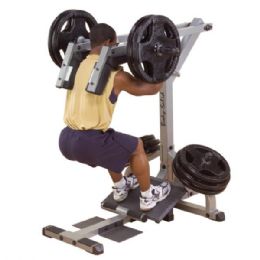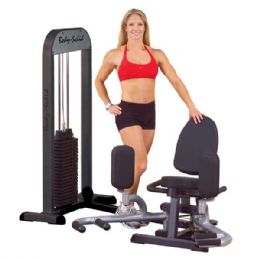






.jpg&newheight=260&quality=80)
What is Weight Resistance Training?
Weight resistance training is any exercise that causes the muscles to contract against an external resistance to increase tone, mass, strength, and/or endurance. The external resistance can be a rubber exercise tubing, dumbbells, personal body weight, weighted gloves, leg weights, hands weights, or any other object that causes the muscles to contract. There are several styles of resistance exercises, such as Olympic lifting, power lifting, and weight lifting. Olympic lifting refers to athletes who lift the weight overhead, as seen in the Olympic Games. Power lifting is a competition where athletes perform the dead lift, squat, and bench press. Weight lifting is a sport where athletes lift heavy weights, typically fewer than six reps. When a person is lifting weights at the gym or at home to get more toned, bigger, or stronger, that is the performance of resistance exercises.
How does Weight Resistance Training Work?
Weight resistance training works by causing microscopic damage, or tears, to the muscle cells. These tears are quickly repaired by the body to help the muscles regenerate and grow stronger. The breakdown of the muscle fiber is called catabolism. The repair and regrowth of the muscle tissue is called anabolism. Anabolic means to grow, which is what happens after the muscle fibers are broken down with resistance exercises. After a resistance training session, protein, insulin-like growth factors, growth hormones, testosterone, and other nutrients rush to the muscles to help repair them to make them stronger. Muscles heal and grow when a person is not working out, also. That is why it is necessary to leave time between workouts for recovery.
Why Should I do Weight Resistance Training?
The benefits of weight resistance training are well documented. Ongoing research continues to prove that it is an important activity for all people of all ages to be engaged in. Nowadays, there is so much engineered inactivity in people’s lives with labor-saving devices that the muscles rarely need to be pushed very hard. Everyday activities that can help to keep the muscles active are raking leaves, cutting grass, pushing a vacuum, or shoveling snow by hand. Climbing stairs, playing sports, or participating in other recreational activities can increase muscle health. Research shows that physical inactivity is the second leading preventable cause of death in the United States.
What are the Benefits of Resistance Training?
Resistance training helps to build muscle tone and strength. Every decade after the age of 30, people lose five pounds of muscle. The number of muscle fibers also decline with age. Between the ages of 30 to 70, people can lose more than 25% of their type 2 muscle fibers, called strength fibers, in their body. Resistance training can help slow down or even reverse the aging process by building muscle strength and mass. It has also been shown to build bone. Osteoporosis, a condition of accelerated bone mineral loss that leads to fractures, can be a crippling disease. It is found particularly in women, but men can develop it, too. Research suggests that resistance exercises can build bone, even in the elderly. There is some evidence that it can help lower moderately high blood pressure. When the elderly can increase their strength, it can result in fewer falls. To help maintain body weight, resistance training can raise a person’s metabolic rate.
How Much Resistance Training Should I do?
The American College of Sports Medicine recommends that resistance training should be progressive in nature, to follow the principle of progressive overload (explained below). It should also be individualized, and provide a stimulus to all the major muscle groups, such as the back, shoulders, chest, arms, abdominals and legs. They recommend that beginners do one set of 8 to 10 exercises for the major muscle groups, 8 to 12 repetitions to fatigue, 2 to 3 days per week. For older and frailer people, those who are 50 to 60 years of age and above, they suggest that doing less repetitions may be more appropriate.
What is the Principle of Progressive Overload?
The principle of progressive overload is when a person lifts weights that are heavy enough to create muscular fatigue at the 10th or 12th repetition. Then, when that gets easy, the weight is increased and that new weight is lifted until it can be done for 10 to 12 reps. The weight can be increased every time 10 to 12 reps can be done. Typically, every time new weight is added, fewer reps are performed because it is heavier. As the muscles grow stronger, more reps can be accomplished. The model that creates the greatest gains in strength and is universally accepted is the principle of progressive overload.
What are the Advantages of Exercise Tubes?
Exercise tubes are elastic tubes with handles that can be substituted for free weights or machines to help build tone and strength. They can come in various thicknesses to increase their tension. Exercise tubes are a versatile way to get started with resistance exercises. Lots of different exercises can be done with them, even while in a chair if the user is unable to get around well with the feet. They can be used with a door strap to attach the tubing to a door. This enables a person to do more versatile exercises than with free weights. Exercise tubes are inexpensive to get started with, and are portable so they can be packed in a bag for vacation, or used at the office during breaks. If they are dropped, they won’t dent the floor, and can be stored easily in a closet, drawer or other convenient location. Over time, they may lose some elasticity and may need to be replaced.
Hulet Smith, OT
Rehabmart Co-Founder & CEO
lb